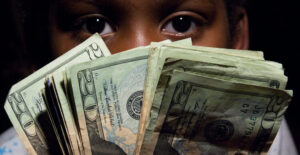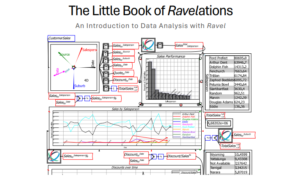When Congress directs the US treasury to do something that requires new US dollars to be created, what is the process of that new money coming into existence?
This article is based on this interview with Warren Mosler.
Table of Contents
The mechanics of how the Federal Reserve creates money
Step 1: The US treasury sells bonds to the primary dealers
Treasury securities are sold at auction with a specified settlement date, the settlement date being the date on which the securities must be paid for.
Step 2: The dealers buy the bonds
The primary dealers bid on the bonds at the auction. The bonds are sold to the highest bidders. After the auction closes, the results of the auction are announced. These primary dealers are the major investment banks within the US banking system.
Step 3: The dealers borrow from the federal reserve
Often, the dealers don’t have the money with which to pay for the bonds. Bear in mind, the money is due on the settlement day, not the day of the auction. While the goal is to sell the bonds to their clients, that sometimes doesn’t happen overnight.
In the simplest case, when the dealer needs to obtain the money to pay for the bonds, the following occurs:
- The primary dealers borrow the money they need from the federal reserve.
- When they do so, they use the bonds as collateral on the loan.
- The money the federal reserve loans to the primary dealers shows up in the account of the primary dealer through an account markup by the federal reserve. This is the point at which the new money is created.
IMPORTANT NOTE: The borrowing of the money from the federal reserve is accomplished via a buy/sell agreement. The dealer sells the bond to the federal reserve, and gets the cash with an agreement to buy back the bond the next day. This creates an interesting dynamic from the perspective of the primary dealer, which is discussed more below.
Step 4: The dealers pay the treasury
At the point, the dealers no longer have the money, as they borrowed it from the federal reserve and gave it to the treasury. The dealers own the bonds, but they also owe the federal reserve the money they borrowed and the bonds are collateral on that loan. This is similar to when someone borrows money from a bank to buy a house and the house itself serves as collateral on the loan.
The interesting dynamic
The primary dealer bought treasury bonds from the US treasury using money borrowed from the federal reserve and for which they used the bonds as collateral.
The mechanics or logistics of this loan is a buy/sell agreement, where the dealer agrees to sell the bond to the federal reserve today with an agreement to buy them back tomorrow. From the perspective of how money changes hands, this is the same as if the dealer borrowed the money today and paid it back tomorrow.
So the dealer obtained newly created money from the federal reserve and gave it to the treasury. The federal reserve now owns the bonds, the dealer owes money to the federal reserve, and hasn’t yet obtained money by selling the bonds to their clients.
So when the dealer needs to buy the bond back from the federal reserve, where do they get the money?
What makes the system work is that the dealers sell the bond to their clients as quickly as they can and that money is used to pay back the federal reserve.
If, by tomorrow, the dealer doesn’t have enough money to fully pay back the federal reserve, the dealer and the federal reserve do another buy/sell agreement for the remaining bonds for the next day.
Either this buy/sell agreement has no collateral, or the existing bonds, that have already been used for collateral, are used as collateral for another loan. Those are effectively the same thing.
This process continues for as many days as is necessary for the dealer to sell all the bonds to their clients, and thereby no longer need the daily buy/sell agreements with the federal reserve.
Why is the process so complex and convoluted?
I’m not sure. Mosler stated this is a holdover from when the US was on the gold standard. I am curious about this and if anyone does know, please tell me.



